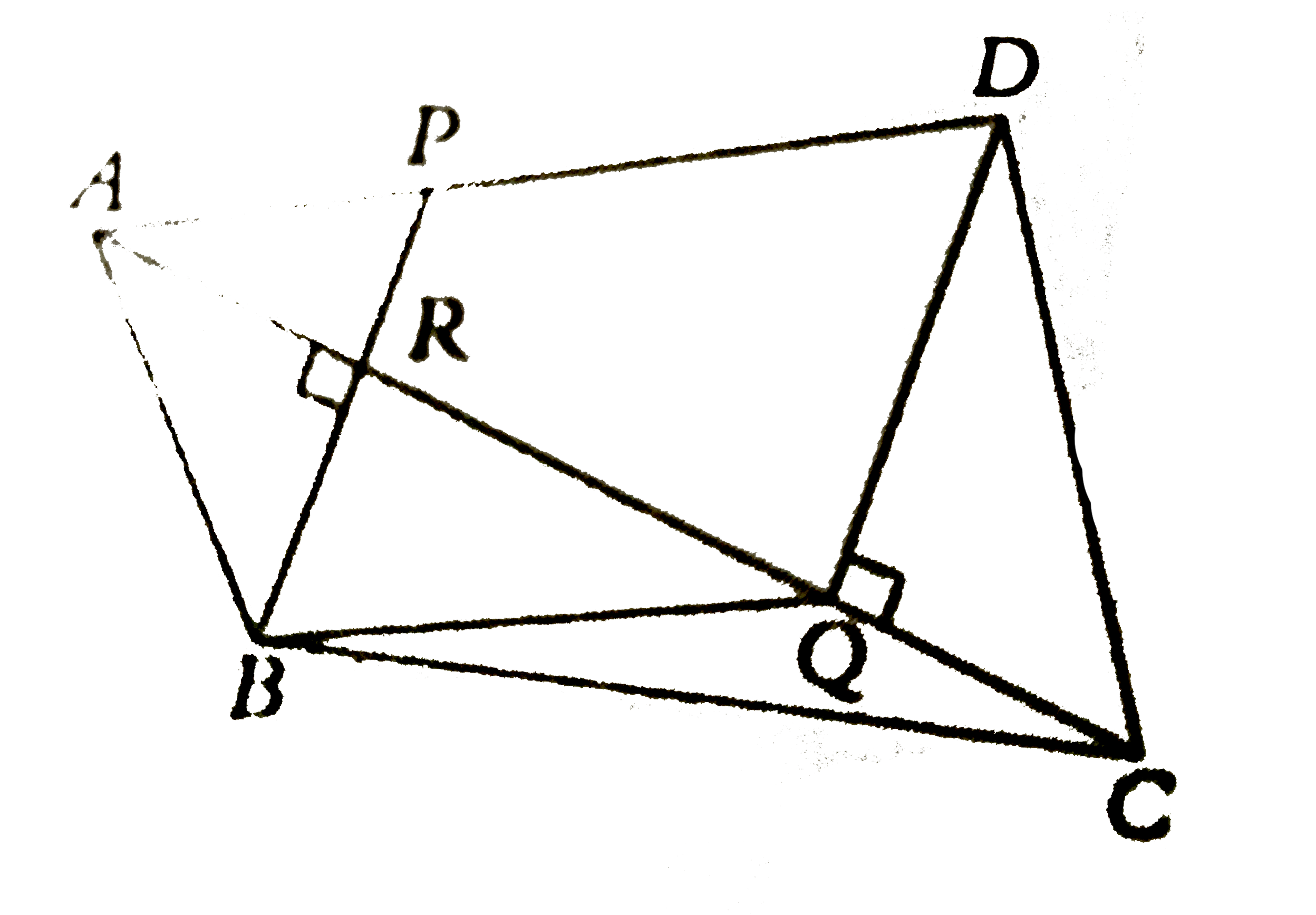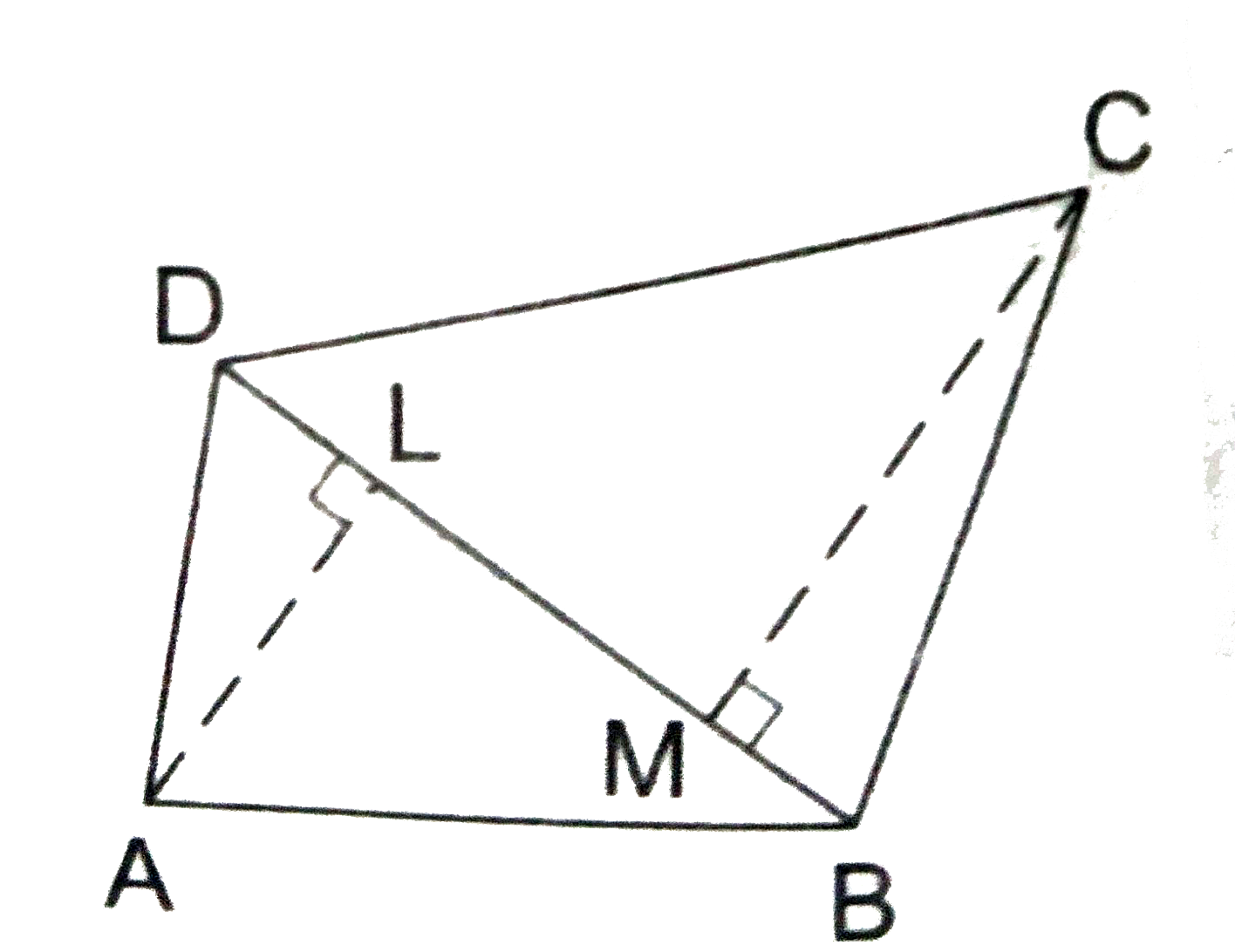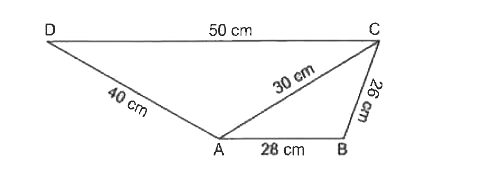
In the figure given above, ABCD is a quadrilateral and BPDQ is parallelogram. AR = 50 cm, CQ = 70 cm, BR = 60, and PR = 40 cm. If the area of the quadrilateral ABCD is , then find the area of then find the area of the parallelogram BPDQ (in ).
Step by step video & image solution for In the figure given above, ABCD is a quadrilateral and BPDQ is parallelogram. AR = 50 cm, CQ = 70 cm, BR = 60, and PR = 40 cm. If the area of the quadrilateral ABCD is 15,600cm^(2), then find the area of then find the area of the parallelogram BPDQ (in cm^(2)). by Maths experts to help you in doubts & scoring excellent marks in Class 10 exams.
Topper's Solved these Questions
- BOOK - EDUCART PUBLICATIONCHAPTER - SAMPLE PAPER (SELF ASSESSMENT) 12EXERCISE - PART-B (Section-III)8videos
SAMPLE PAPER (SELF ASSESSMENT) 12
- BOOK - EDUCART PUBLICATIONCHAPTER - SAMPLE PAPER (SELF ASSESSMENT) 12EXERCISE - PART-B (Section-IV)9videos
SAMPLE PAPER (SELF ASSESSMENT) 12
- BOOK - EDUCART PUBLICATIONCHAPTER - SAMPLE PAPER (SELF ASSESSMENT) 12EXERCISE - PART-B (Section-V)4videos
SAMPLE PAPER (SELF ASSESSMENT) 12
- BOOK - EDUCART PUBLICATIONCHAPTER - SAMPLE PAPER 5 EXERCISE - Part B (Section - V)4videos
SAMPLE PAPER 5
- BOOK - EDUCART PUBLICATIONCHAPTER - SAMPLE PAPER - 11EXERCISE - SECTION-C10videos
SAMPLE PAPER - 11
Similar Questions
Knowledge Check
- Question 1 - Select One

In the figure given above, ABCD is a quadrilateral and BPDQ is parallelogram. AR = 50 cm, CQ = 70 cm, BR = 60, and PR = 40 cm. If the area of the quadrilateral ABCD is 15,600cm2, then find the area of then find the area of the parallelogram BPDQ (in cm2).A9460B8460C7500D9000 - Question 2 - Select One
ABCD is a parallelogram, ∠DAB=30∘ BC = 20 cm and AB = 40cm. Find the area of parallelogram :
A150 cm2B200 cm2C400 cm2D260 cm2 - Question 3 - Select One
ABCD is a parallelogram and m ∠DAB=30∘, BC=20 cm and AB=20 cm. Find the area of parallelogram:
A150cm2B200cm2C400cm2D260cm2
If the area of a parallelogram ABCD is 30cm2,then the length of altitude AQ is
View SolutionIf area of Parallelogram ABCD is 80cm2 Find the area of ΔAPD.
 View Solution
View SolutionABCD is a quadrilateral with AB = 9 cm, BC = 40 cm, CD = 28 cm, DA = 15 cm and angle ABC is a right-angle.
What is the area of quadrilateral ABCD ?View SolutionIn the given figure ABCD is a quadrilateral in which diagonal BD=24cm,AL⊥BDandCM⊥BD such that AL=9cm and CM=12 cm. Calculate the area of the quadrilateral .
 View Solution
View SolutionIn the figure, ABCD is a quadrilateral BD = 20 cm. If AL⊥BD and CM⊥BD such that AL = 10 cm and CM = 5 cm, find the area of quad. ABCD.
 View Solution
View Solution


